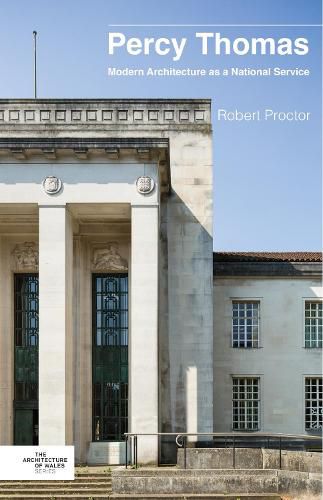Readings Newsletter
Become a Readings Member to make your shopping experience even easier.
Sign in or sign up for free!
You’re not far away from qualifying for FREE standard shipping within Australia
You’ve qualified for FREE standard shipping within Australia
The cart is loading…






Sir Percy Thomas was the most important twentieth-century architect in Wales, renowned for interwar civic buildings such as Swansea Guildhall and the Temple of Peace in Cardiff. His architectural practice, Sir Percy Thomas & Son, designed much of the post-1945 welfare state and industry in Wales and beyond. In the late twentieth century, the Percy Thomas Partnership specialised in complex healthcare, industrial and public buildings, becoming an international practice.
This comprehensive, meticulously-researched history examines the architecture of Percy Thomas in depth for the first time, and explores its wider social and political significance. Arguing that the practice sustained an ethical approach to architecture as a 'national service' for the benefit of society, this book gives new insights into the role of the architect and the changing relationships between the built environment and the state throughout the century. Its unique perspective from Wales promises to reshape our understanding of modern architecture.
$9.00 standard shipping within Australia
FREE standard shipping within Australia for orders over $100.00
Express & International shipping calculated at checkout
Sir Percy Thomas was the most important twentieth-century architect in Wales, renowned for interwar civic buildings such as Swansea Guildhall and the Temple of Peace in Cardiff. His architectural practice, Sir Percy Thomas & Son, designed much of the post-1945 welfare state and industry in Wales and beyond. In the late twentieth century, the Percy Thomas Partnership specialised in complex healthcare, industrial and public buildings, becoming an international practice.
This comprehensive, meticulously-researched history examines the architecture of Percy Thomas in depth for the first time, and explores its wider social and political significance. Arguing that the practice sustained an ethical approach to architecture as a 'national service' for the benefit of society, this book gives new insights into the role of the architect and the changing relationships between the built environment and the state throughout the century. Its unique perspective from Wales promises to reshape our understanding of modern architecture.